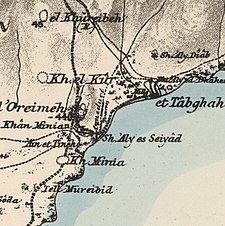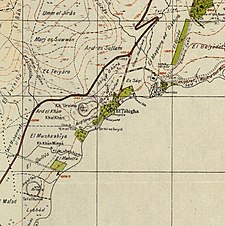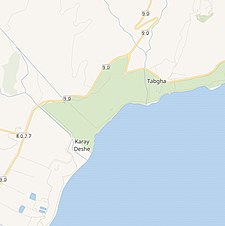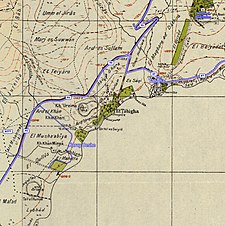Tabgha | |
|---|---|
 Tabgha in 1903 | |
| Etymology: From the Greek name "Heptapegon", lit. "seven springs". | |
A series of historical maps of the area around Tabgha (click the buttons) | |
Location within Mandatory Palestine | |
| Coordinates: 32°52′10″N 35°32′37″E / 32.86944°N 35.54361°E | |
| Palestine grid | 201/252 |
| Geopolitical entity | Mandatory Palestine |
| Subdistrict | Tiberias |
| Area | |
| • Total | 5,389 dunams (5.389 km2 or 2.081 sq mi) |
| Population (1945) | |
| • Total | 330[1][2] |
| ^ includes Tell el Hunud and Khan el Minya | |


Tabgha (Arabic: الطابغة, al-Tabigha; Hebrew: עין שבע, Ein Sheva which means "spring of seven") is an area situated on the north-western shore of the Sea of Galilee in Israel and a depopulated Palestinian village. It is traditionally accepted as the place of the miracle of the multiplication of the loaves and fishes (Mark 6:30-46) and the fourth resurrection appearance of Jesus (John 21:1-24) after his Crucifixion. The village population was expelled in 1948 during Operation Broom.




